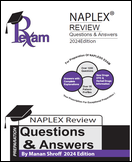
Which of the following information regarding Pneumovax 23 is TRUE?
a. Pneumococcal vaccine is administered intradermally as one 0.5-mL dose.
b. Pneumococcal vaccine MUST NOT be administered at the same time as influenza vaccine.
c. For any person who has received a dose of pneumococcal vaccine at age greater than 65 years, revaccination is not indicated.
d. PNEUMOVAX 23 is approved for use in children older than 1 year of age.
Which of the following information regarding Pneumovax 23 is TRUE?
a. Pneumococcal vaccine is administered intradermally as one 0.5-mL dose.
b. Pneumococcal vaccine MUST NOT be administered at the same time as influenza vaccine.
c. For any person who has received a dose of pneumococcal vaccine at age greater than 65 years, revaccination is not indicated.
d. PNEUMOVAX 23 is approved for use in children older than 1 year of age.
Answer:(c). PNEUMOVAX 23 is a vaccine indicated for active immunization for the prevention of pneumococcal disease caused by the 23 serotypes contained in the vaccine.
PNEUMOVAX 23 is NOT approved for use in children younger than 2 years of age because children in this age group do not develop an effective immune response to capsular types contained in the polysaccharide vaccine.
The Advisory Committee on Immunization Practices (ACIP) has recommendations for revaccination against pneumococcal disease for persons at high risk who were previously vaccinated with PNEUMOVAX 23. Routine revaccination of immunocompetent persons previously vaccinated with a 23-valent vaccine, is not recommended.
All persons in this category should receive the pneumococcal vaccine, including previously unvaccinated persons and persons who have not received vaccine within 5 years (and were <65 years of age at the time of vaccination). For any person who has received a dose of pneumococcal vaccine at age greater than 65 years, revaccination is not indicated.
Pneumococcal vaccine is administered intramuscularly or subcutaneously as one 0.5-mL dose. Pneumococcal vaccine may be administered at the same time as influenza vaccine (by separate injection in the other arm) without an increase in side effects or decreased antibody response to either vaccine.
Pneumococcal vaccine also may be administered concurrently with other vaccines. The administration of pneumococcal vaccine with combined diphtheria, tetanus, and pertussis (DTP); poliovirus; or other vaccines does not increase the severity of reactions or diminish antibody responses.
Canadian and U.S. product labeling do say to consider separating administration of Zostavax and Pneumovax 23 by at least four weeks, since concurrent administration of these vaccines can reduce patients' immune responses to Zostavax.
www.pharmacyexam.com Try Our Naplex QBank.



